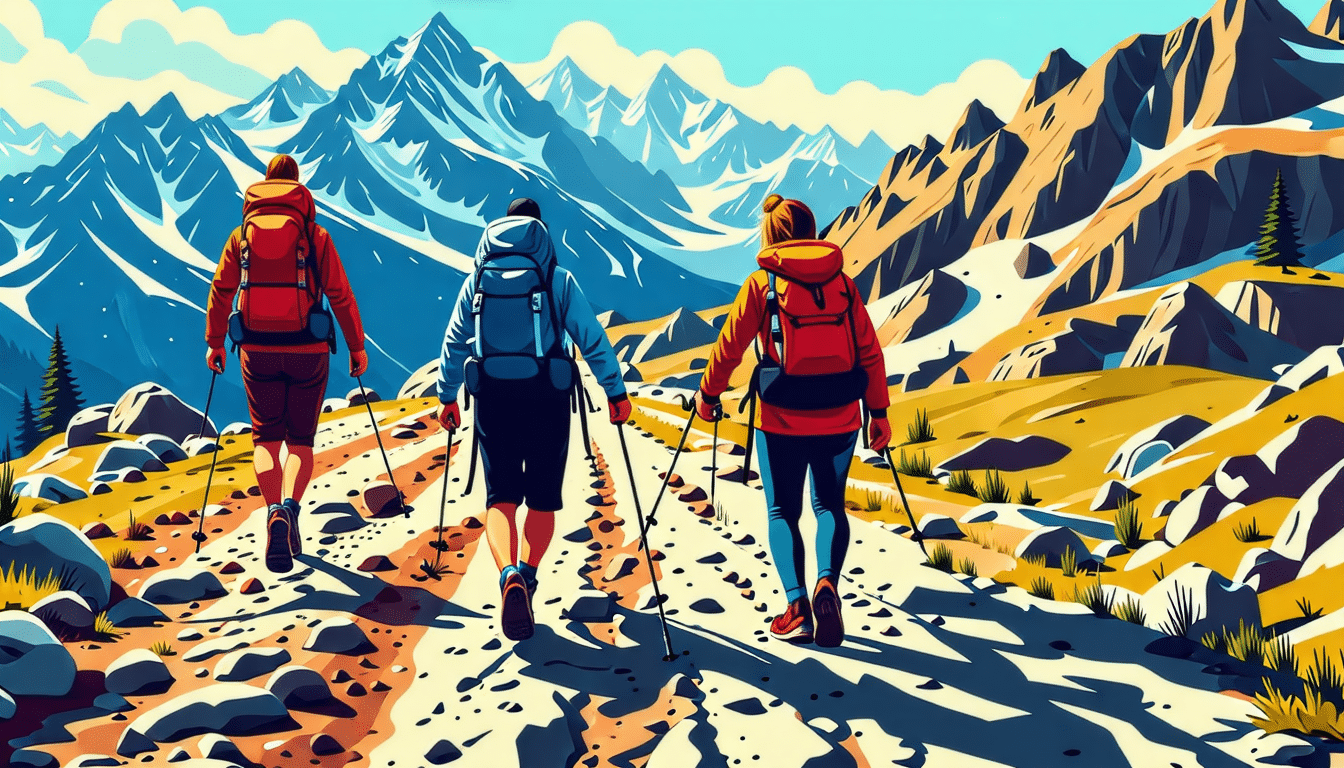Are you passionate about the mountains and dream of pushing your limits by moving from simple walking to mountaineering? Discover in this article the 4 key steps to evolving towards this higher level. Get ready to reach new peaks and live unforgettable experiences in the mountains!
Do you explore hiking trails with ease and are you looking to challenge new peaks? Maybe it’s time to take up mountaineering. Much more than just walking in the mountains, mountaineering combines techniques and endurance to reach spectacular altitudes. Here’s how to go from walking to mountaineering in four essential steps for a safe transition and, above all, for increased pleasure.
Do you explore hiking trails with ease and are you looking to challenge new peaks? Maybe it’s time to take up mountaineering. Much more than just walking in the mountains, mountaineering combines techniques and endurance to reach spectacular altitudes. Here’s how to go from walking to mountaineering in four essential steps for a safe transition and, above all, for increased pleasure.
Physical preparation, the key to successful mountaineering
Hiking is the best way to start mountaineering. It develops your endurance and your ability to endure long hours of walking in the mountains. Did you know that regular hikers can improve their aerobic endurance by up to 15%? Carrying a 10 to 15 kg hiking bag over distances of more than 20 km strengthens your muscles and your cardio, ideal preparation for long alpine climbs.
Take regular hikes with significant elevation changes. This not only helps strengthen your legs, but also allows your body to adapt to the reduced oxygen at altitude. Your next hike could well be a mini-preparation for your future high mountain climbs.
Setting your mountaineering goals
Before setting off to conquer the summits, it is crucial to define your objectives. Mountaineering comes in several disciplines: snow, rock, ice, and a combination of these elements. Each type of mountaineering requires skill and specific material. Start with snow races, often the most accessible for beginners. Nothing beats the feeling of stepping on eternal snow for the first time. Keep in mind that each climb is unique and offers its share of challenges and satisfactions.
Understanding and controlling risks
Mountaineering often means taking risks, but it is essential to identify them and prepare for them. Objective risks such as rockfalls or avalanches and subjective risks linked to a poor assessment of one’s capabilities must be well understood. Mastery of techniques of security is essential.
- Pay attention to environmental risks: rock falls, avalanches.
- Evaluate your own skills and fitness.
- Master the use of crampons and ice axes.
- Learn to walk on steep terrain.
- Train yourself in roping techniques.
Hiking in technical terrain is a great way to learn these skills. Remember, prevention is better than cure!
Improve yourself and be well supported
Caution and progression are your allies in this transition. It is important to take on challenges adapted to your level. Don’t hesitate to call on experienced guides for your first mountaineering races, or join specialized clubs to exchange with other enthusiasts.
Practice the basics:
- Participate in training ice.
- Practice maneuvers such as belays and roping up.
- Read and understand guides and topo-guides on mountaineering.
Anticipate each outing by carefully studying your routes and imagining possible difficult passages. An honest self-assessment of your skills in the face of conditions is crucial to avoiding unforeseen circumstances. Never let overconfidence guide your steps.
In conclusion, moving from hiking to mountaineering is a rewarding adventure that requires a controlled and gradual leap into the unknown. With a good dose of preparation, technical knowledge and humility in the face of the mountains, you are ready to swap your hiking shoes for crampons and experience unforgettable climbs.









